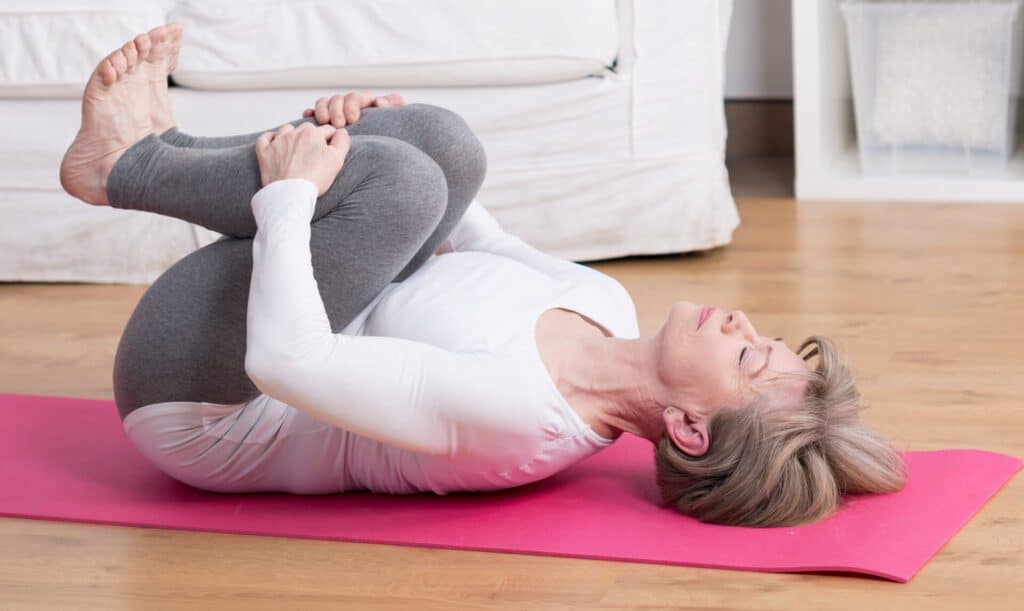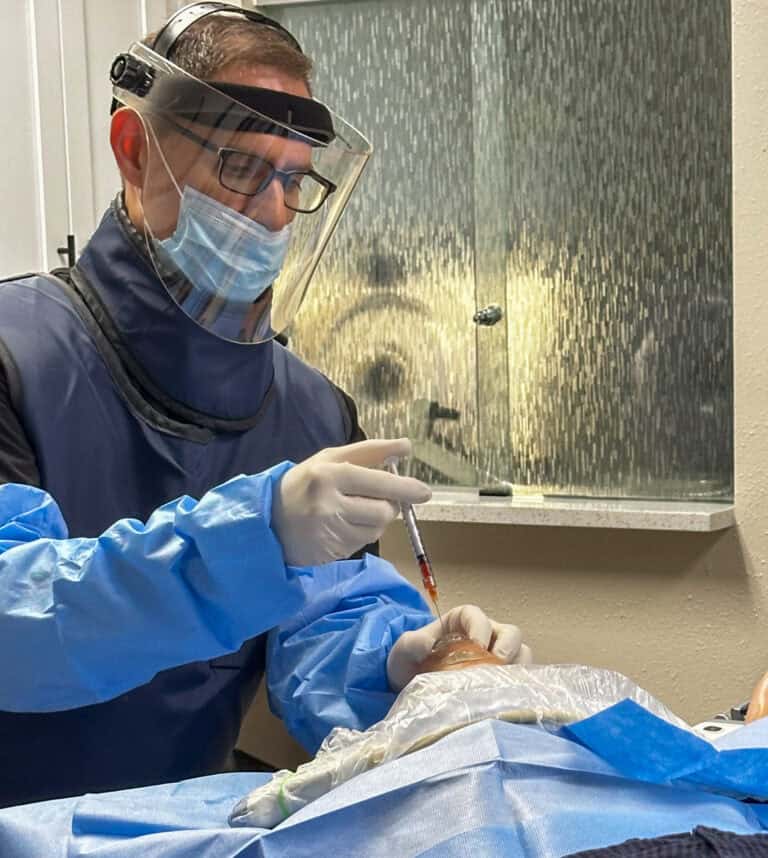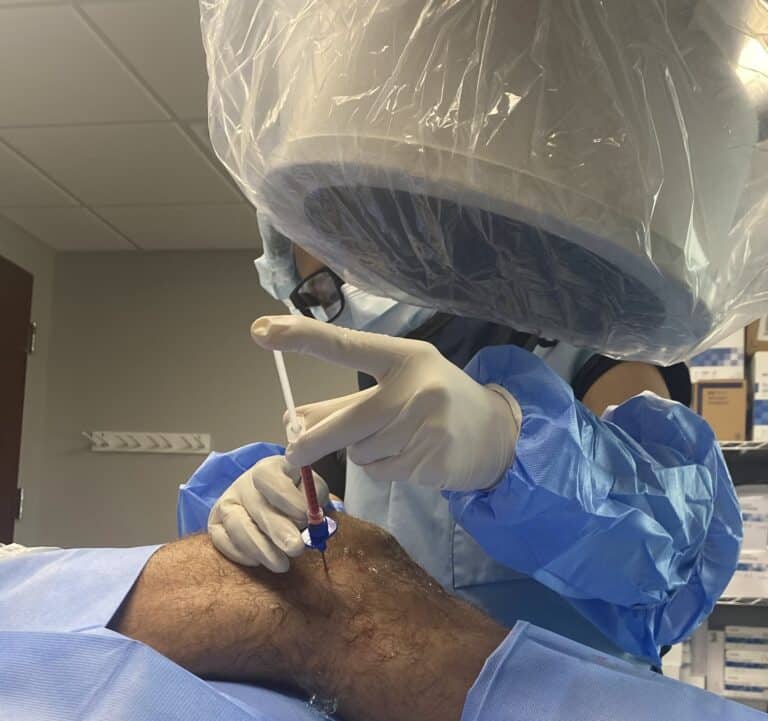In a https://www.ncbi.nlm.nih.gov/pmc/articles/PMC3579079/ 2013 Study1, there is a high prevalence of low back disc pathology in asymptomatic subjects. On 102 subjects reporting no low back pain or symptoms, incidental disc bulge/herniation was found in over 80% of the participants. This study is one of many that have been utilized to illustrate the prevalence of lumbar disc pathology in individuals reporting no current or previous back pain.
The significance of this study illustrates that there can be issues with low back discs without pain, but also, that when low back pain (with and without symptoms down the leg) begins there may have been underlying degeneration all along. Basically, it is very common that pathology precedes pain.
Clinically, pain is considered a lagging indicator of dysfunction. Meaning, that dysfunction and wear and tear have long been happening before you feel the pain from it. Conversely, once relief sets in after seeing a non-operative physician or therapist the physical deterioration may still be present, but pain has decreased or been eliminated. Even when a disc bulge is still in the healing process the pain can be as if there is no pathology at all.
If pain is a lagging indicator, what can be a predictor of what causes back pain? Back pain can be caused by a singular traumatic event, like lifting a heavy object incorrectly, or it may come on slowly over time. If the pain came on slowly over time, that is usually related to structural and postural misalignments as well as muscle imbalances of tightness and weakness.
The tightness and weakness that could be causing back pain will be discussed, but first it is important to address that there are many types of low back pain. Some low back pain is simply called lumbago or lumbalgia, specifically meaning low back pain. This is often the type of back pain that is significant, but yields little to no significant findings on MRI or Xray. This type of pain very successfully responds to simple muscle balancing stretches and exercises. Other types of low back pain involve the discs between lumbar segments, or the joints between lumbar segments. For these types of pain, there are specific avenues of therapy and doing the wrong type of exercises can actually worsen the pain. If you are unsure of the nature of your pain, please be sure to consult a doctor before beginning an exercise regimen. Or, if any movements you try exacerbate your pain, cease those activities and consult your physician.
The most common imbalance leading to general low back pain is called Lower Crossed Syndrome and was defined by a doctor named Vladmir Janda in 19793. The image below summarizes the combination of tight and weak muscles that most often lead to back pain and dysfunction. This imbalance often also contributes to the development of more chronic issues in low back pain, such as spinal stenosis, lumbar disc bulges, and/or facet syndrome.

In the case of low back pain we see this pattern most commonly present, as illustrated in Image 13:
Tight Muscles
- Rectus femoris muscle of the quads
- Iliopsoas muscle in the back and hip
- Lower Back muscles
Weak Muscles
- Core Muscles – transverse abdominus and obliques
- Gluteal muscles – gluteus medius and gluteus maximus
These muscle imbalances cause the pelvis to tilt forward, and put pressure on the vertebrae and discs in the lumbar spine. For this imbalances, there are targeted exercises to work on the tightness and weakness in order to support the knee joint.
The following exercises2 address the tight and weak muscles defined by lower-crossed syndrome and provide a conservative, do-it-yourself regimen to help improve your back pain before seeking invasive medical procedures or surgery. The following exercises could be performed in 15-20 minutes at home with minimal equipment. If the regimen is performed consistently four times a week for six weeks, and no improvement is appreciated, then it would be advised to pursue an evaluation with an orthopedic specialist. This content is not intended to be a substitute for professional medical advice, diagnosis, or treatment. Always seek the advice of your physician or another qualified health provider with any questions you may have regarding a medical condition.
Hip Flexor Stretch
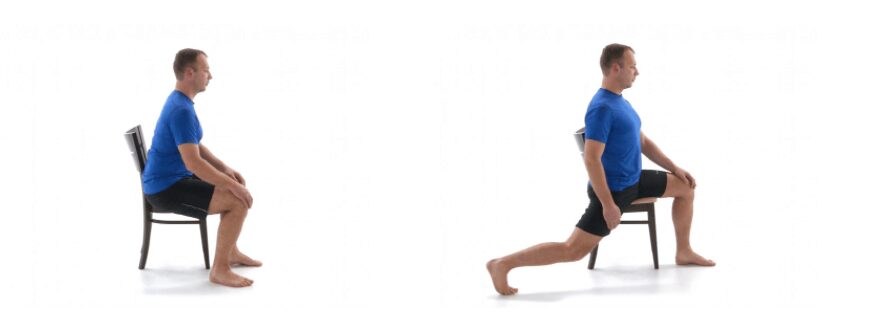
- Sit on the edge of a chair and extend one leg back, keeping one cheek on the seat.
- Keep your back neutral.
- You should feel a comfortable stretch on the front of your hip.
- Hold the position as recommended and breathe normally.
- Hold the position for 60 seconds on each side.
- Perform 2 sets.
Figure 4 Stretch

- Cross the legs with the leg to be stretched on top.
- Gently pull the lower knee toward the chest until a stretch is felt in the buttocks.
- Hold the position for 60 seconds on each side.
- Perform 2 sets.
Knee To Chest Stretch

- Lie on your back.
- Pull both knees to your chest with your hands behind the thighs until a comfortable stretch is felt in the lower back.
- Hold the position for 60 seconds.
- Perform 2 sets.
Pelvic Tilt With Hold
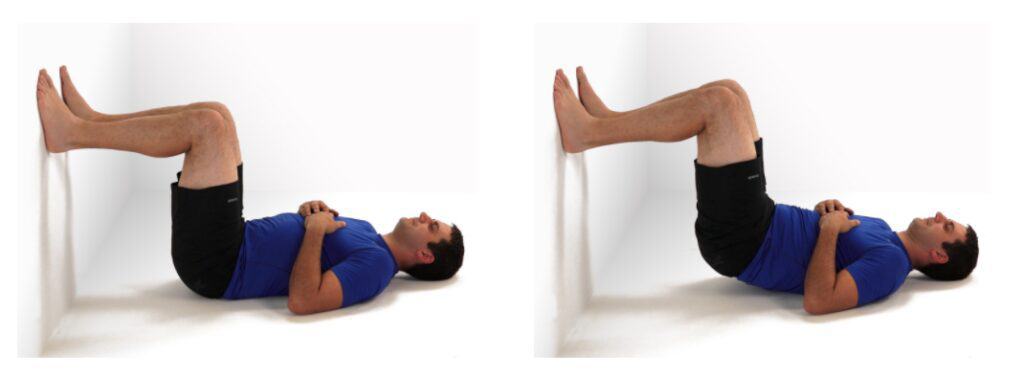
- Lay on your back with your feet on the wall and your hips and knees flexed at 90 °.
- Use your legs to press into the wall so that your pelvis and lower back are lifted slightly off the floor.
- Squeeze your abdominals so the lower back rounds towards the floor.
- Hold for 5 seconds and lower between repetitions.
- Work up to performing 3 sets of 10 repetitions with the 5-second hold at the top.
Banded Glute Bridge
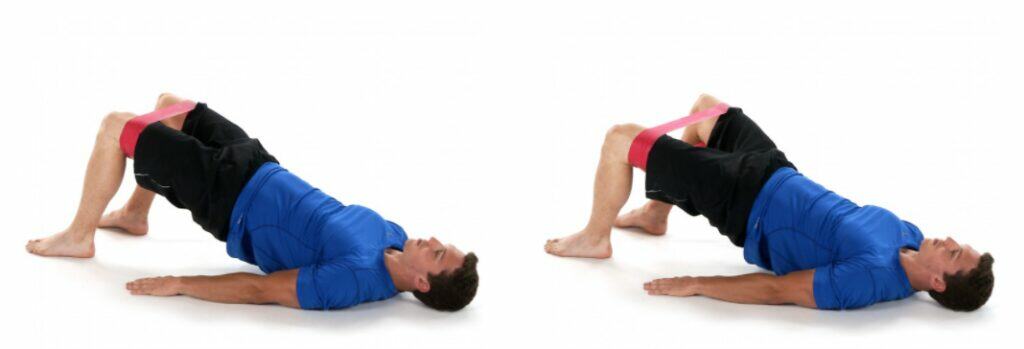
- Lie on your back, knees bent and a rubber band around the thighs, just above the knees. (Loop bands can be found easily on online retailers or other retailers, like Target).
- Lift the hips as high as possible without arching the lower back and open the thighs against the resistance of the rubber band
- Press open the knees for 5 seconds into the band
- Lower the hips and repeat
- Work up to performing 3 sets of 10 repetitions with the 5-second hold at the top.
We hope you find these exercises helpful. If you continue to experience pain, feel free to contact our offices to discuss your non-surgical options.
Annotations
